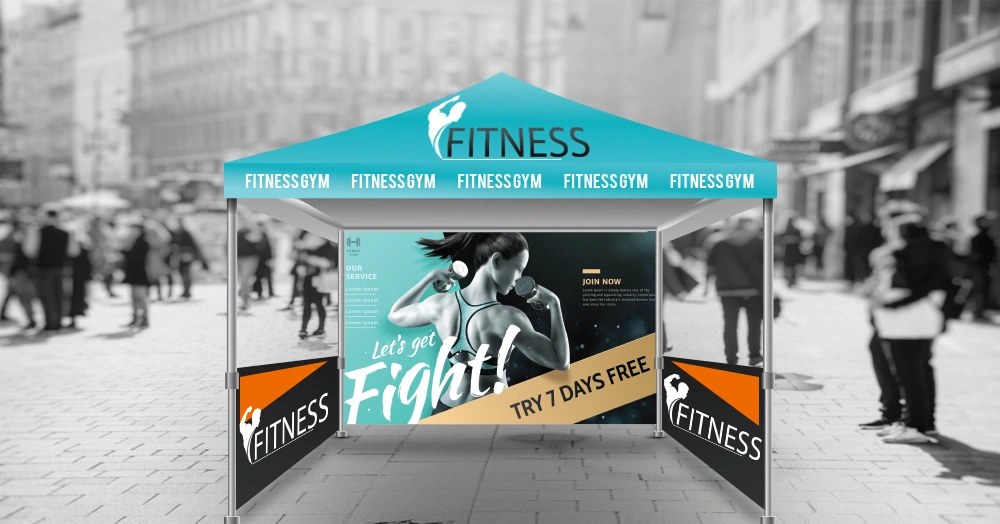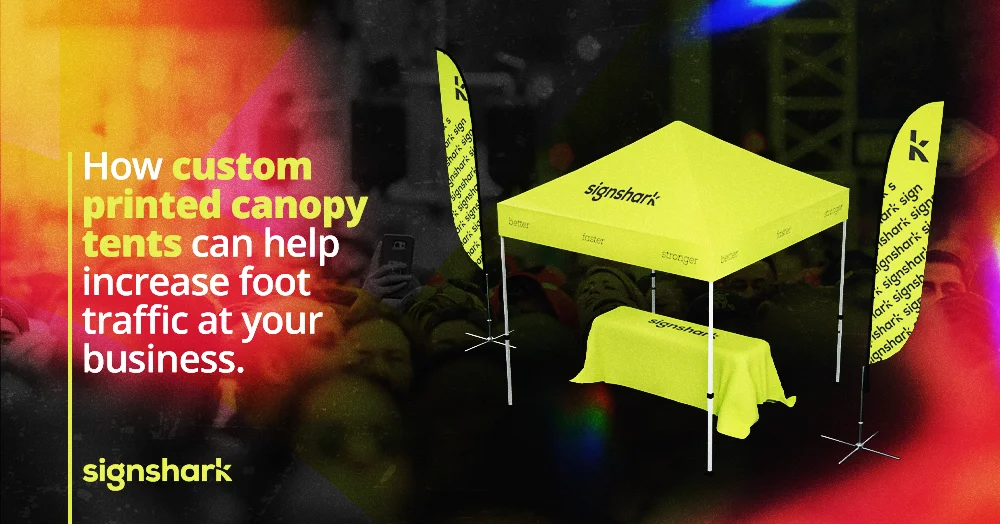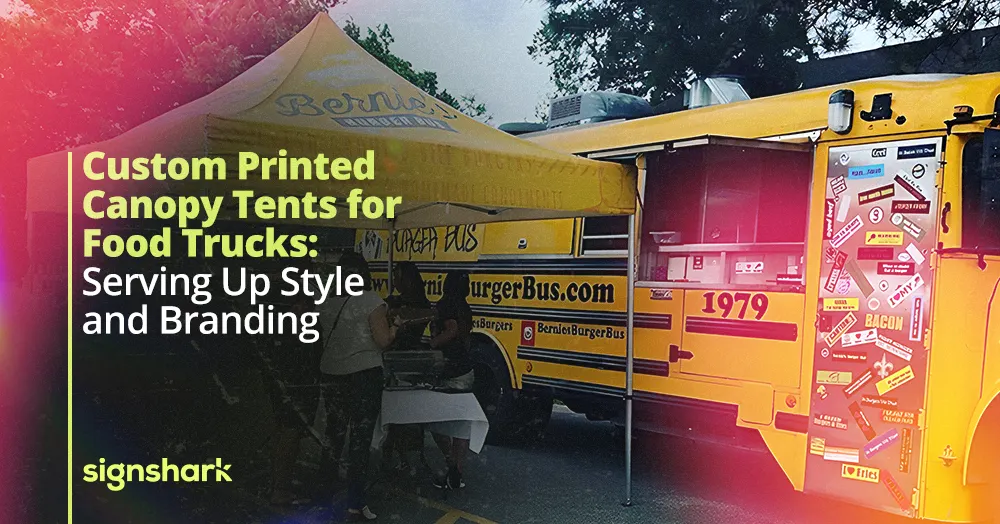
Slant leg and straight leg canopies may appear identical at first glance, but the overall performance isn't the same. The common difference between straight leg vs slant leg canopy is that a slant leg canopy has legs that tilt outward, providing a modern profile and good wind resistance. A straight-leg canopy, on the other hand, has perpendicular legs that provide optimal shade and are easy to set up.
Whether you have a trade show or business event, the choice between a straight leg vs a slant leg canopy can impact usability, coverage, stability, and cost. This guide explains everything you need to know to select the best canopy style for your needs.
What is the Difference Between a Straight Leg and a Slant Leg Canopy?
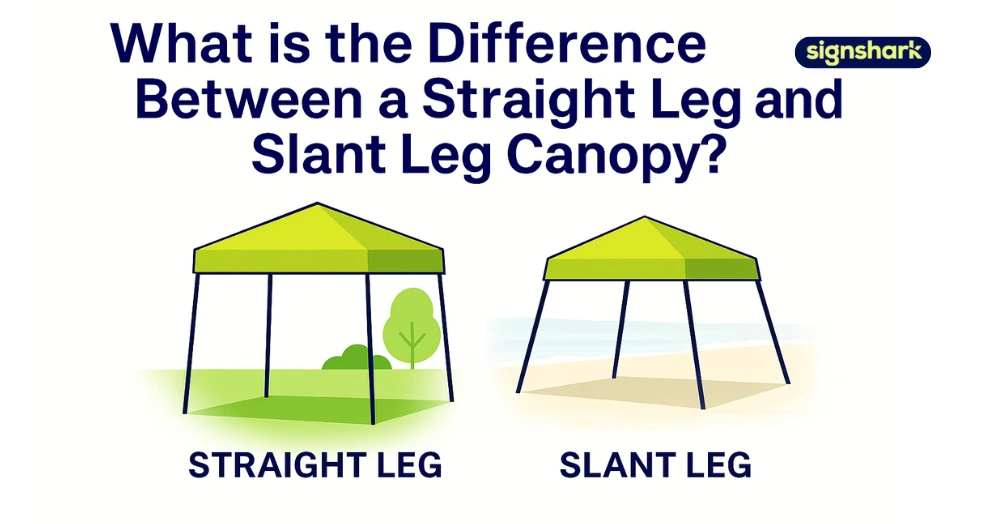
Although the job of both canopies is to offer portable shelter to attendees, there are certain differences between the slant and straight leg canopies. Some of these are-
Coverage
Straight-leg canopies maximize space by providing full square footage. Their vertical legs ensure that all the interior area is usable. For instance, the custom canopy tent 10×10 offers complete coverage of 100 square feet, making it perfect for trade booths or product displays.
On the other hand, slant leg canopies offer less coverage due to their angled stance. A 10×10 slant leg model typically provides around 75 square feet of usable space. This reduction can be a drawback when setting up larger displays or showcasing multiple items.
Weight and Strength
One of the aspects of slant leg canopies are built with less metal, making them lighter and more portable, an advantage for solo vendors or those constantly on the move. However, their lighter construction means they’re less durable in high winds or uneven terrain.
Straight leg canopies, with their heavier and more stable framework, provide superior strength and resistance to weather conditions. Their solid build makes them a better fit for extended outdoor use or bustling event environments.
Ease of Setup
Straight leg canopies are typically easier and faster to set up. Their straight legs stand up tall and line up nicely, making a strong and balanced frame. One person can set them up in just a few minutes.
On the other hand, slant leg canopies demand more attention during setup. The angled legs can be tricky to position correctly, especially on uneven surfaces, making it tough to get the frame level.
Cost
Slant leg canopies are usually the more economical choice. Thanks to their design, which requires less material, they’re lighter in weight and less expensive to produce, perfect for short-term usage.
In contrast, straight leg canopies come at a higher price but offer better value for regular use. They have sturdy bodies, more coverage, and versatility, making them a worthwhile investment for frequent and long-term users.
Durability
Straight leg canopies last longer. Their straight leg frame allows for even weight distribution, spreading weight and pressure evenly, so they handle harsh weather like wind, rain, or snow better. This makes them perfect for long-term outdoor events.
In contrast, slant leg canopies tend to distribute stress unevenly due to their angled design. This can lead to quicker wear and a higher chance of bending, particularly in challenging weather conditions.
Pros and Cons of a Slant Leg Canopy Tent
To make an informed choice, let’s look at the pros and cons of a slant leg canopy tents:
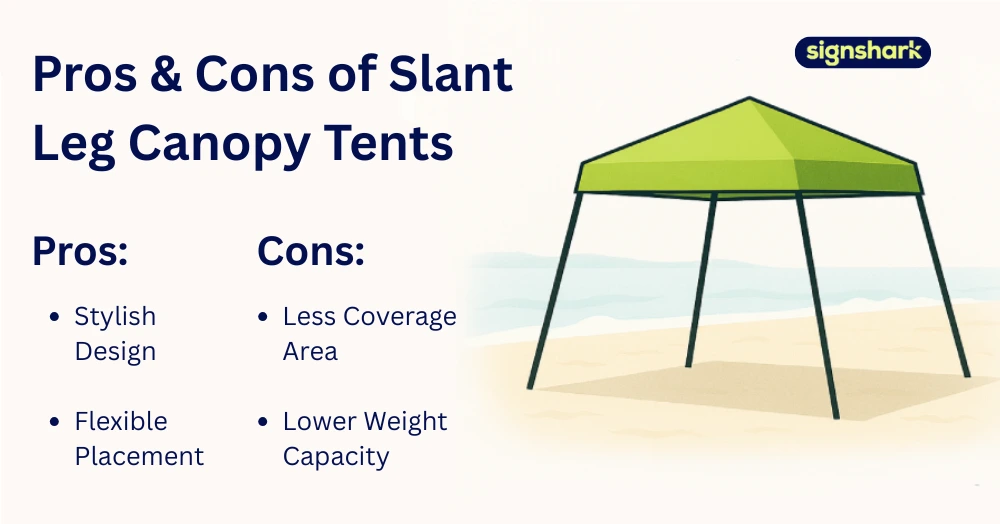
Pros of a Slant Leg Canopy Tent
Stylish Design
Slant leg design has angled legs that look modern and cool. They are great for casual get-togethers or stylish backyard parties.
Flexible Placement
The tapered frame makes it easier to position these canopies in compact or irregular spaces where a full square footprint isn't feasible.
Cons of Slant Leg Canopy Tent
Less Coverage Area
The angled legs give slant leg canopies less space underneath, so they provide less shade than straight leg canopies of the same size.
Lower Weight Capacity
Slant leg canopies are made for light use. They can’t handle heavy weight or strong winds, so they aren’t as reliable for long outdoor activities.
Pros and Cons of a Straight Leg Canopy Tent
Before you make a choice, here’s a quick look at the advantages and disadvantages of using a straight leg canopy tent:
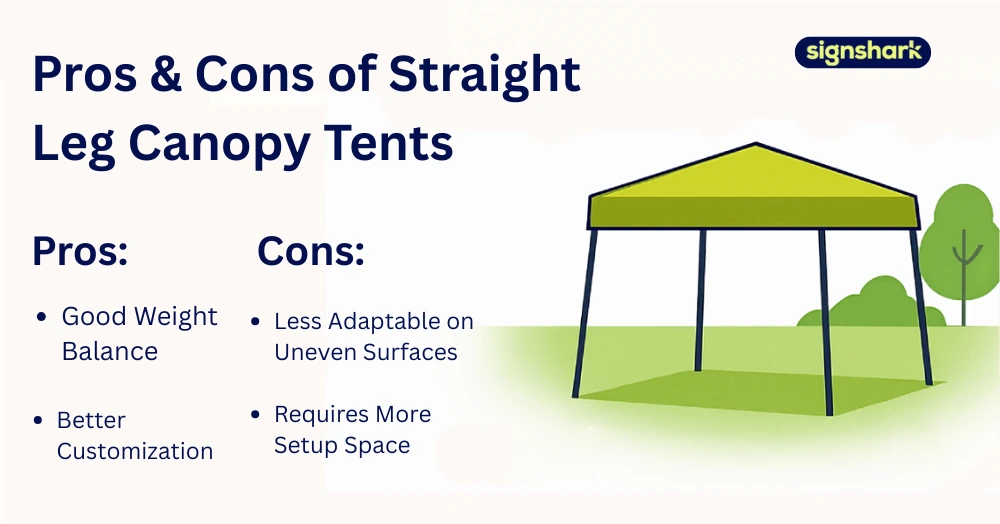
Pros of Straight Leg Canopy Tent
Good Weight Balance
Vertical legs help distribute weight and force uniformly throughout the frame, enhancing overall stability and resistance to wind.
Better Customization
Straight leg canopies have a flexible frame that makes it easy to add table covers or custom banners. This makes them perfect for event branding and promotions
Cons of Straight Leg Canopy Tent
Less Adaptable on Uneven Surfaces
Straight leg canopies perform best oGood Weight Balancen level surfaces. On sloped or rocky ground, they may become unstable unless properly anchored.
Requires More Setup Space
Because of their straight-leg design, these canopies need the full space of their base size, which can be challenging to accommodate in confined or crowded spaces.
Why are Slant Leg Canopies so much Cheaper?
Slant leg canopies are more budget-friendly thanks to their angled design, which requires lighter and thinner materials, reducing both manufacturing and shipping expenses. While this keeps costs low and makes them easy to move, these canopies have less structural integrity and are best for short-term or casual use because they are less stable and durable than straight-leg canopies.
Which One Should You Choose Straight Leg vs Slant Leg Canopy?
Both slant-leg and straight-leg canopy tents come with their own set of pros and cons. If you’re looking for a stylish, cost-effective option for short-term use, a slant-leg canopy could be the best option. However, for those who need maximum coverage, durability, and customization, a straight leg option is the smarter long-term choice.
For those looking to create a standout setup Sign Shark custom canopy tent is the top choice. We provide full control over canopy colors, logos, and taglines. Our canopy tents are fire-resistant, come with a 1-year warranty, and are built from heavy-duty frames. They are safe and perfect for event professionals and business owners who want to leave a lasting impression
FAQs on the Difference Between Slant and Straight Leg Canopy
Let us check some of the questions and answers on straight leg canopy vs slant
1) What are the advantages of a slant leg tent?
Slant leg canopies are a great choice for casual use; they’re lightweight, budget-friendly, and have a sleek design, making them perfect for backyard gatherings or quick shade solutions.
2) What should you consider when buying a pop-up tents?
Look for factors like frame durability, coverage size, and ease of assembly. Also, consider how often you’ll use it, whether you need branding, and the nature of the setup location.
3) Why do straight leg tents cost more?
These canopies use more robust materials and heavier frames, which enhance strength and longevity. The added benefits of full interior space and customization options also contribute to their higher price.






